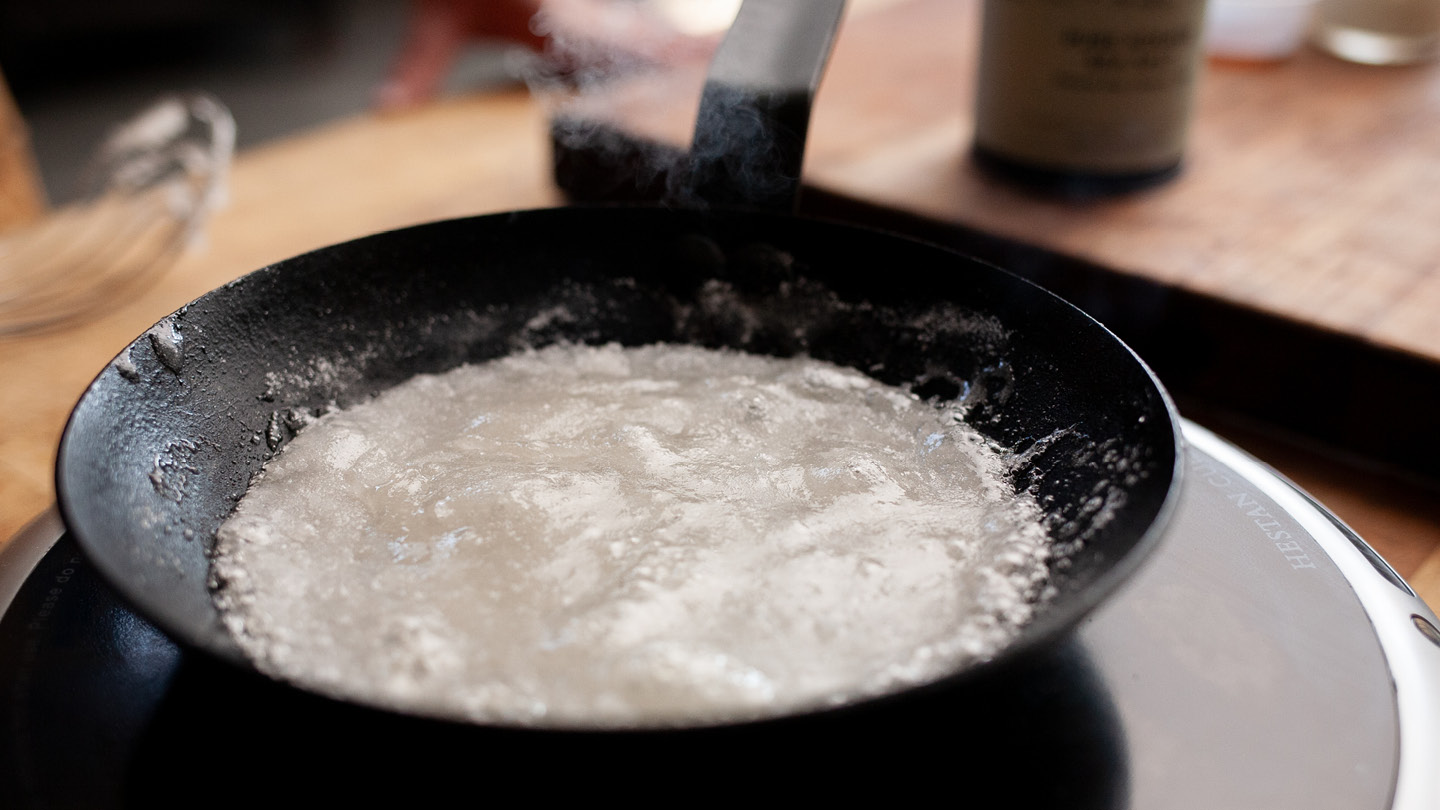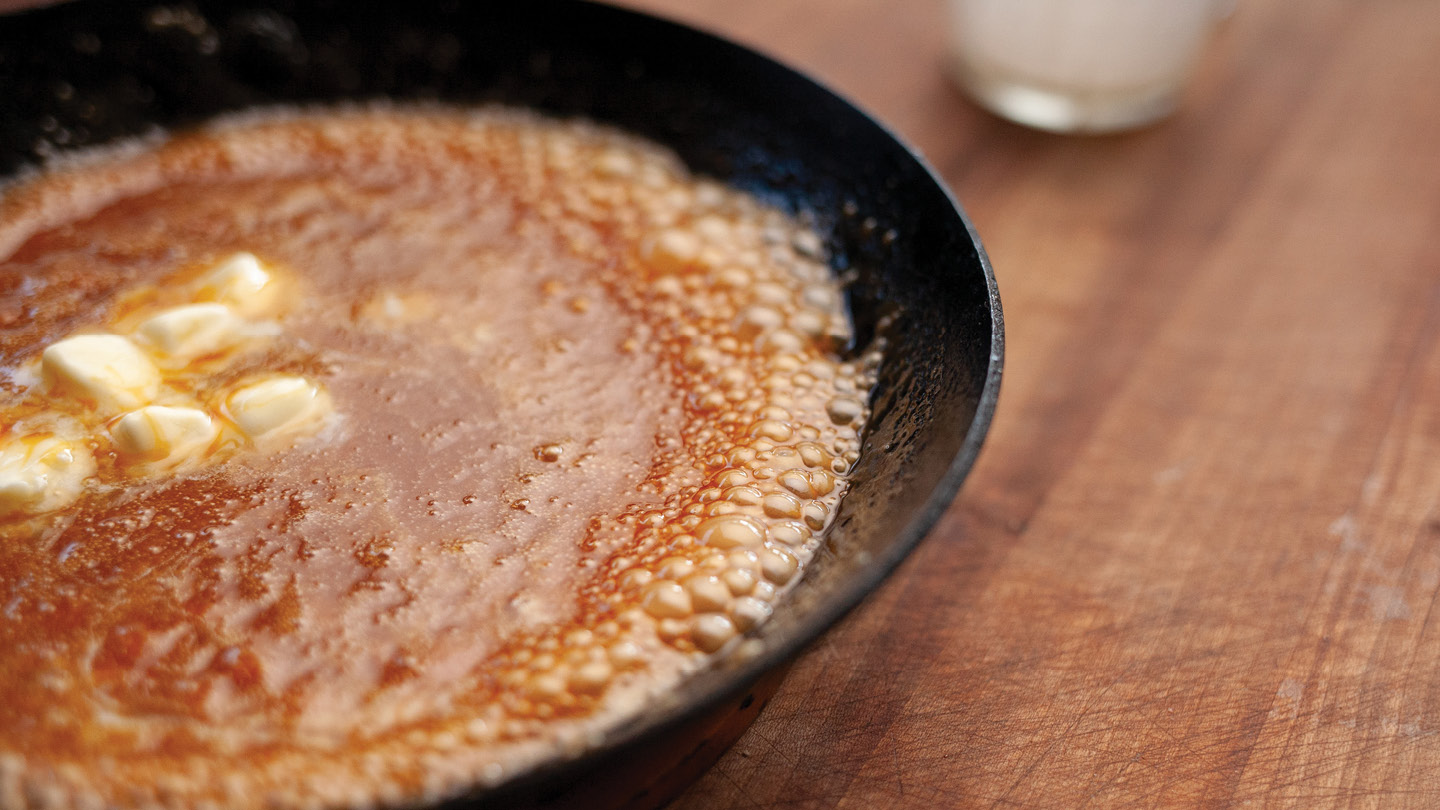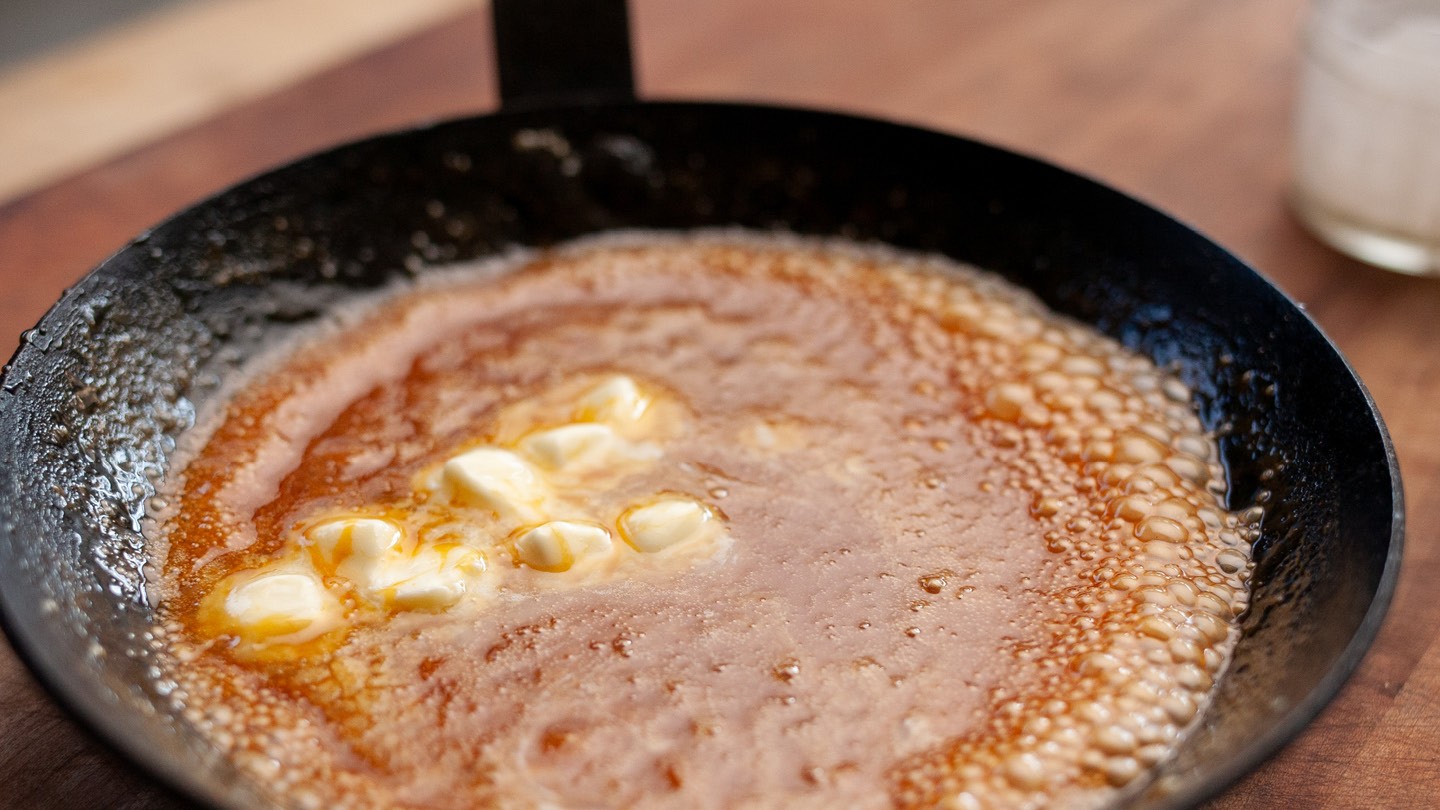Indulge in a classic – Salted Caramel Sauce. Every dessert imaginable can be a little sweeter with a drizzle of this sauce. From brownies to cocktails, you choose. Chef Tom, effortlessly makes Salted Caramel Sauce using only 6 simple ingredients. Why settle for store-bought when you can make your own in minutes.
Salted Caramel Sauce
Tom Jackson
Rated 4.1 stars by 11 users
Category
Dessert
Cuisine
French
Servings
10
Prep Time
5 minutes
Cook Time
10 minutes
Calories
91
Have you ever thought about making your own caramel. Chef Tom shows us how easy it is to make Salted Caramel Sauce with 6 simple ingredients. This will be the smoothest caramel sauce you have ever eaten. Desserts, coffees, cocktails, fruit dips; caramel makes everything better especially if it’s homemade.
Ingredients
- 1/2 cup white sugar
- 1/4 cup light corn syrup
-
1 tsp Jacobsen Salt Co. Kosher Sea Salt
- 1/4 cup heavy cream
- 1/2 tsp vanilla extract
- 2 tbsp unsalted butter, diced
Directions
- Place the sugar, corn syrup and salt in a Lodge 8” Steel Skillet. Bring the mixture to a boil and let cook until caramel brown in color, whisking occasionally, to heat evenly. Remove the skillet from the heat.

- Pour the heavy cream and vanilla into the skillet and whisk until smooth.

- Add the butter and whisk until melted.


Recipe Note
Other Recipes You Might Enjoy:
Chocolate Pecan Pie with Salted Caramel
Recipe Highlights and Insights:
What is inverted sugar?
Inverted sugar is a mixture of glucose and fructose that results from the break down of sucrose, a disaccharide sugar composed of one glucose molecule and one fructose molecule. The hydrolysis process involves breaking the chemical bond between glucose and fructose with the help of an acid or an enzyme. The term “inverted” refers to the change in optical rotation of plane-polarized light that occurs during this hydrolysis process. Sucrose has a specific optical rotation, and when it is hydrolyzed into glucose and fructose, the resulting mixture rotates plane polarized light in the opposite direction.
Why is Inverted sugar commonly used in the food industry?
Prevents crystallization: Inverted sugar has a higher resistance to crystallization compared to sucrose, making it useful in the production of certain sweets, candies, and syrups where a smooth texture is desired.Moisture Retention: Inverted sugar has hygroscopic properties, meaning it attracts and retains moisture. This can help improve the moisture content and texture of baked goods.Enhancing Flavor: Inverted sugar can enhance the flavor and mouthfeel of certain products contributing to a smoother and creamier taste.Extended Shelf Life: Its resistance to crystallization and moisture-retaining properties contribute to an extended shelf life for certain products.
Nutrition
Nutrition
- Serving Size
- 1 oz
- per serving
- Calories
- 91
- Fat
- 3.4 grams
- 4%
- Saturated Fat
- 2.2 grams
- 11%
- Cholesterol
- 10 milligrams
- 3%
- Sodium
- 71 milligrams
- 3%
- Carbs
- 16 grams
- 6%
- Fiber
- 0 grams
- Sugar
- 12 grams
- Protein
- .1 grams